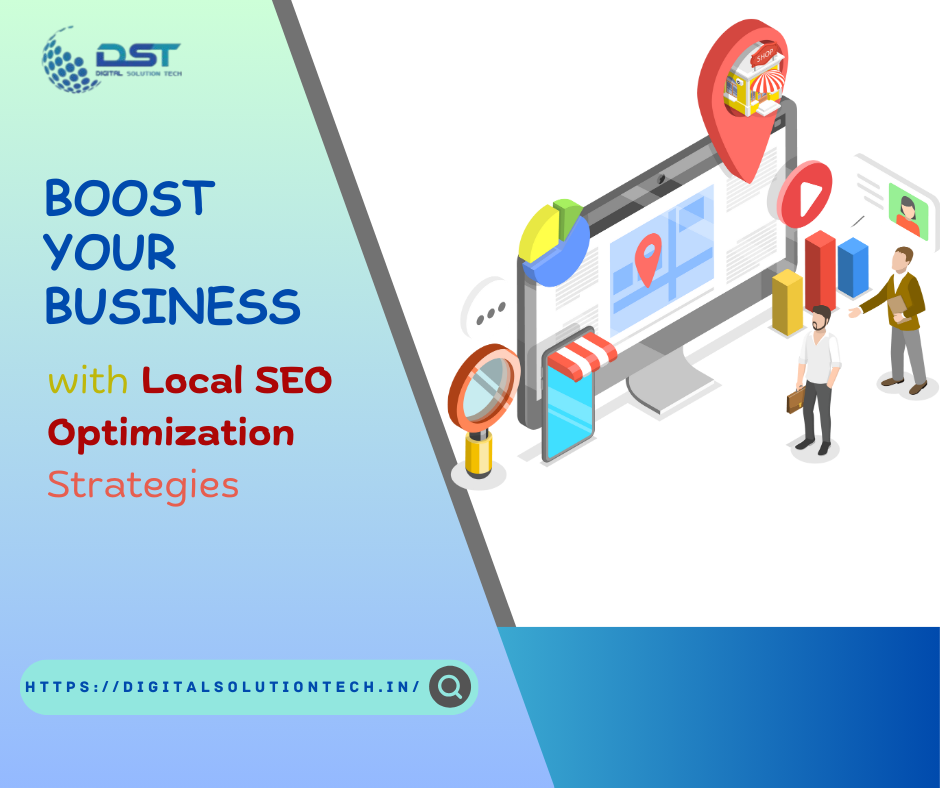Local SEO optimization is essential for businesses targeting nearby customers. Whether you own a small shop or a service-based company, optimizing for local search can drive more foot traffic and leads. Moreover, it helps in staying ahead of competitors. This guide explores the best practices to improve your local search visibility effectively.
🌍Why Local SEO Optimization Matters
Local SEO helps businesses appear in location-based searches. When users search for services “near me,” Google prioritizes optimized businesses. As a result, a strong local presence ensures higher rankings, improved credibility, and better customer engagement. Additionally, it enhances visibility for potential customers who are ready to make a purchase.

🌍Key Elements of Local SEO Optimization
-
Google Business Profile Optimization
A well-optimized Google Business Profile (GBP) is crucial. Therefore, ensure your profile is complete with accurate information, business hours, categories, and high-quality images. Furthermore, regularly updating your profile increases engagement.
-
NAP Consistency Across Platforms
Your business Name, Address, and Phone Number (NAP) should be consistent across all directories. Otherwise, any inconsistency can confuse search engines and lower rankings. Thus, always double-check your details.
-
Localized Content Strategy
Creating content that includes local keywords and city names enhances visibility. Additionally, blog posts, landing pages, and customer testimonials can help boost your local authority. Hence, focus on relevant topics that resonate with your audience.
-
Customer Reviews and Ratings
Reviews influence search rankings and customer trust. Consequently, encourage satisfied clients to leave positive feedback on Google and other review platforms. Also, respond to reviews to show engagement and build credibility.
-
Local Citations and Directory Listings
Listing your business on directories like Yelp, Bing Places, and industry-specific sites improves credibility. More importantly, ensure all details match your GBP listing to avoid confusion. Regularly updating listings enhances trustworthiness.
-
Mobile Optimization
Most local searches happen on mobile devices. Therefore, a responsive website with fast-loading pages enhances the user experience and improves rankings. Moreover, a well-optimized mobile site reduces bounce rates and increases conversions.
-
Schema Markup for Local Businesses
Adding structured data markup helps search engines understand your business better. In addition, it increases the chances of appearing in rich snippets. Thus, implementing schema markup is an effective SEO strategy.
-
Local Link Building
Earning backlinks from local websites, newspapers, and blogs boosts domain authority. Furthermore, partnering with local influencers or sponsoring community events can gain exposure. Strong local connections contribute to better rankings.
-
Optimized Meta Tags and Descriptions
Including local keywords in title tags, meta descriptions, and headers improves search visibility. Likewise, keeping them concise, relevant, and engaging ensures higher click-through rates. Well-structured metadata enhances your online presence.
-
Engagement on Social Media
Active participation on platforms like Facebook, Instagram, and LinkedIn enhances brand awareness. Similarly, sharing local updates and interacting with customers builds trust. Social media engagement significantly impacts local search performance.
🌍Common Mistakes to Avoid in Local SEO Optimization

- Incomplete or inaccurate Google Business Profile information, which can lead to lost opportunities.
- Ignoring negative reviews or failing to respond to customer feedback, ultimately harming reputation.
- Not optimizing for voice search, which is increasing in local searches and affecting visibility.
- Using duplicate content across multiple pages, harming search rankings and reducing effectiveness.
- Lack of mobile-friendly design, leading to poor user experience and increased bounce rates.
🌍Final Thoughts
Local SEO optimization is a continuous process requiring strategic efforts. By following these best practices, businesses can strengthen their online presence and attract more local customers. Furthermore, staying updated with algorithm changes and refining strategies ensures long-term success. As a result, businesses can maintain a competitive edge and grow consistently.



